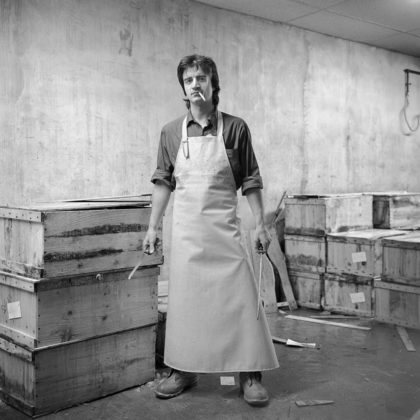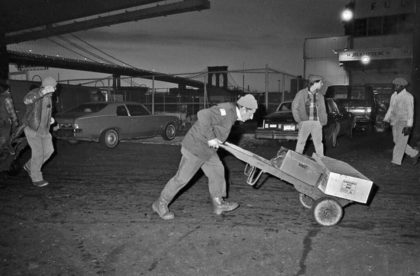Art in Tribeca: The photographs of Barbara Mensch
If you are over at the Tin Building, be sure to check out the photography installation in the southeast corner, sort of behind the sushi restaurant on the first floor. It’s the work of Barbara Mensch, who as a young artist in the early 1980s, moved into a 19th-century warehouse just steps from the Fulton Fish Market, and it’s brilliant. The project was commissioned by the Howard Hughes Corporation and Jean-Georges Vongerichten, who created the Tin Building.
Mensch also has a new book of her work in the neighborhood over the decades: “A Falling Off Place — The Transformation of Lower Manhattan.” And she is giving a free tour of the Seaport and the installation on Oct. 7, 1p, with the stories and history behind the photographs
During her early years at the Seaport, Mensch restored her loft space by hand and preserved the large rings on the oak floors left by the brine barrels that were once stored there. And she was surrounded by other artists. Her kitchen sink plumbing was replaced by an assistant to artist Mark Di Suvero, whose sculpture towers over Zuccotti Park, and her work table was assembled by an assistant to artist and Tribecan Richard Serra.
Mensch told the Seaport blog that she was captivated by the all-night world outside her apartment, but it took years for her to gain their trust and be able to photograph their world. “My early attempts to capture this vibrant workingman’s culture were futile,” she said. “I began my work against a barrage of investigations by the FBI and local law enforcement into criminal activities at the Fulton Market. I was considered to be a government agent and was continually intimidated…to put it mildly.”
Born in Brooklyn in 1953, Mensch graduated from Hunter College in the late ’70s and was working as an illustrator at Ms. Magazine when she developed an interest in photography and how it allowed her to be outside in the city. She was also intrigued with the tonalities of the fine print and the endless possibilities of light. Her work has been exhibited at PS1 and The Los Angeles Institute of Contemporary Art, and covered in The Times, the Journal, Exposure Magazine and dozens of others. This is her third book.

















